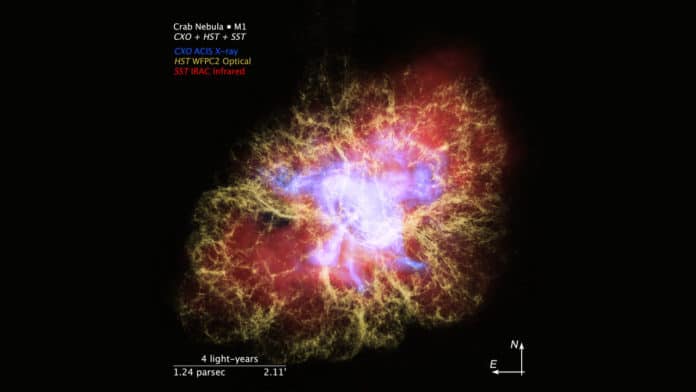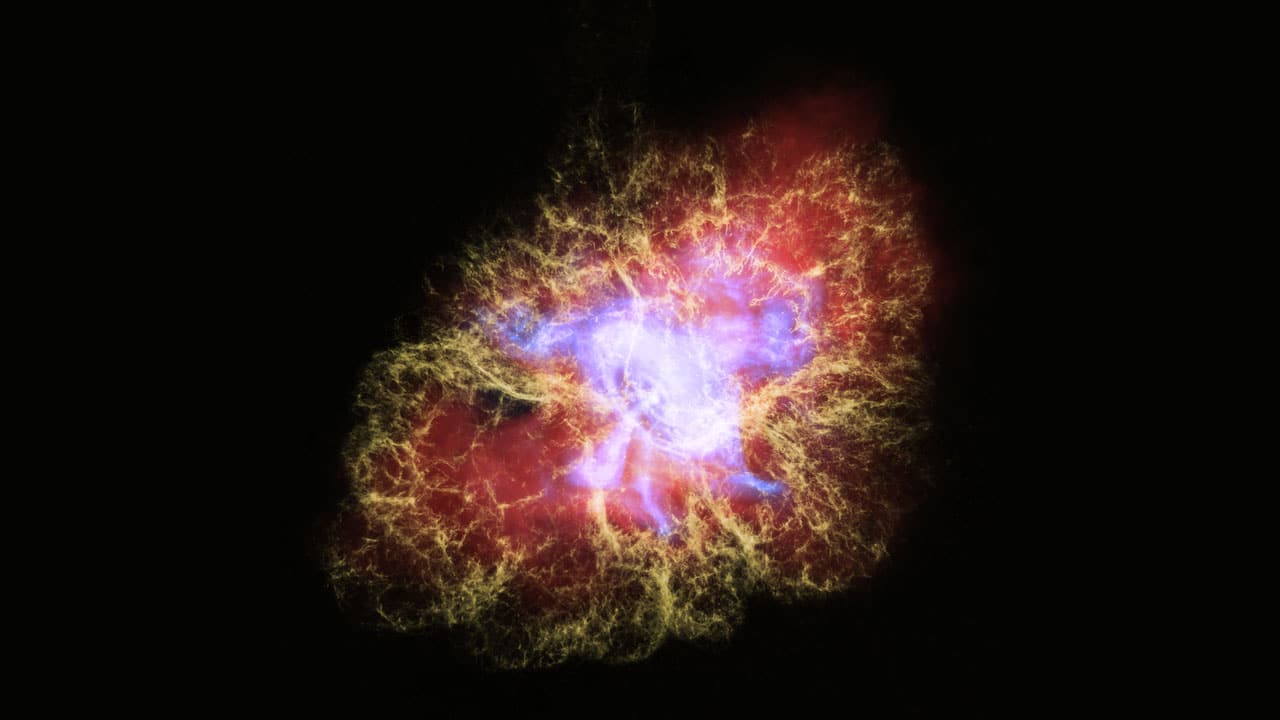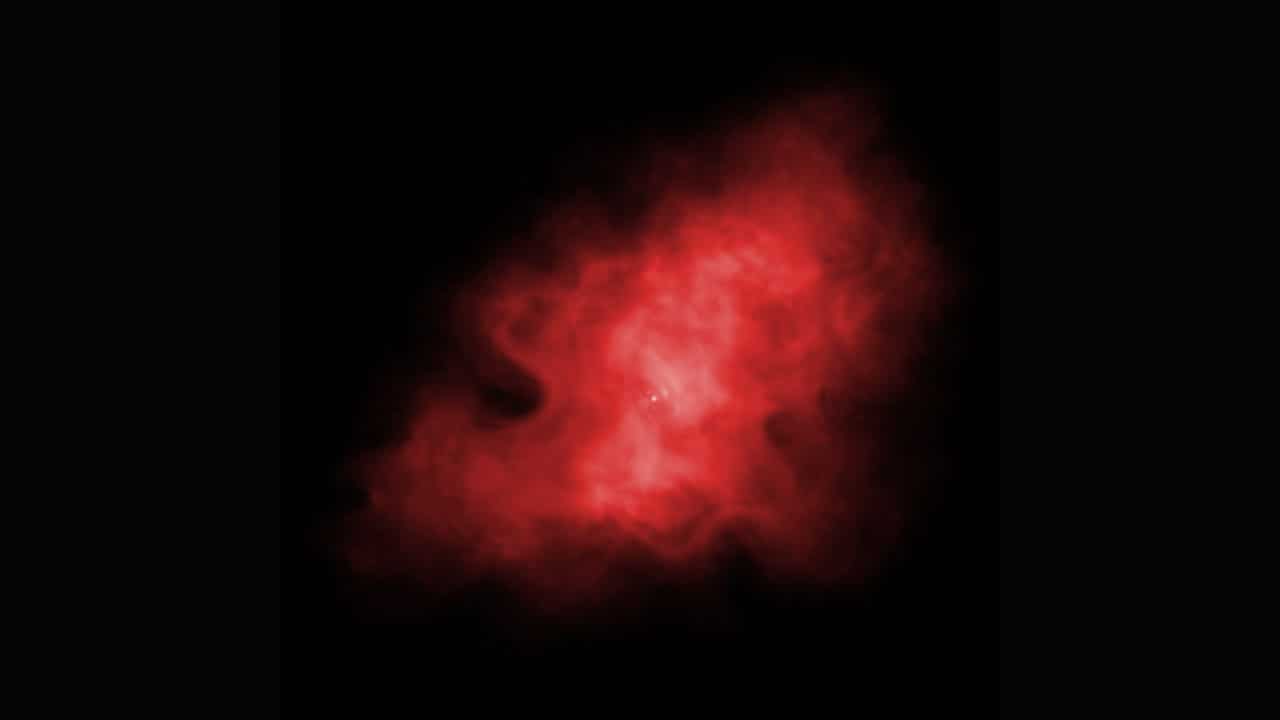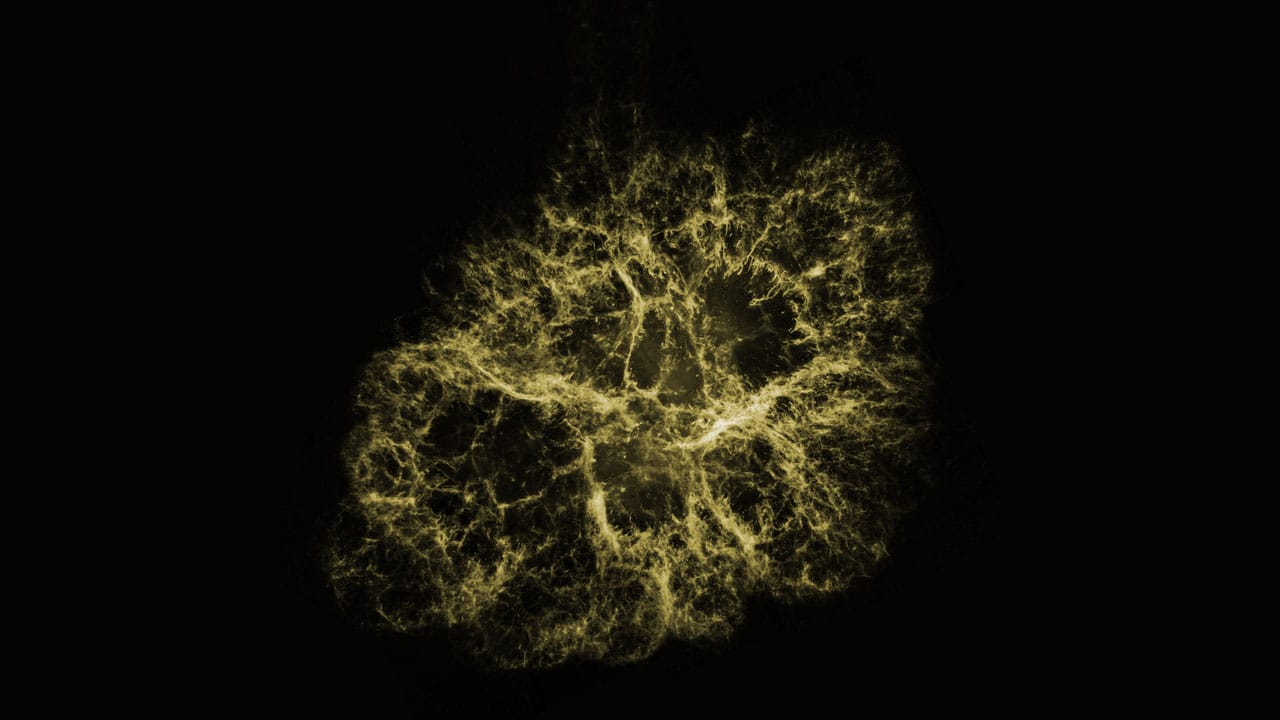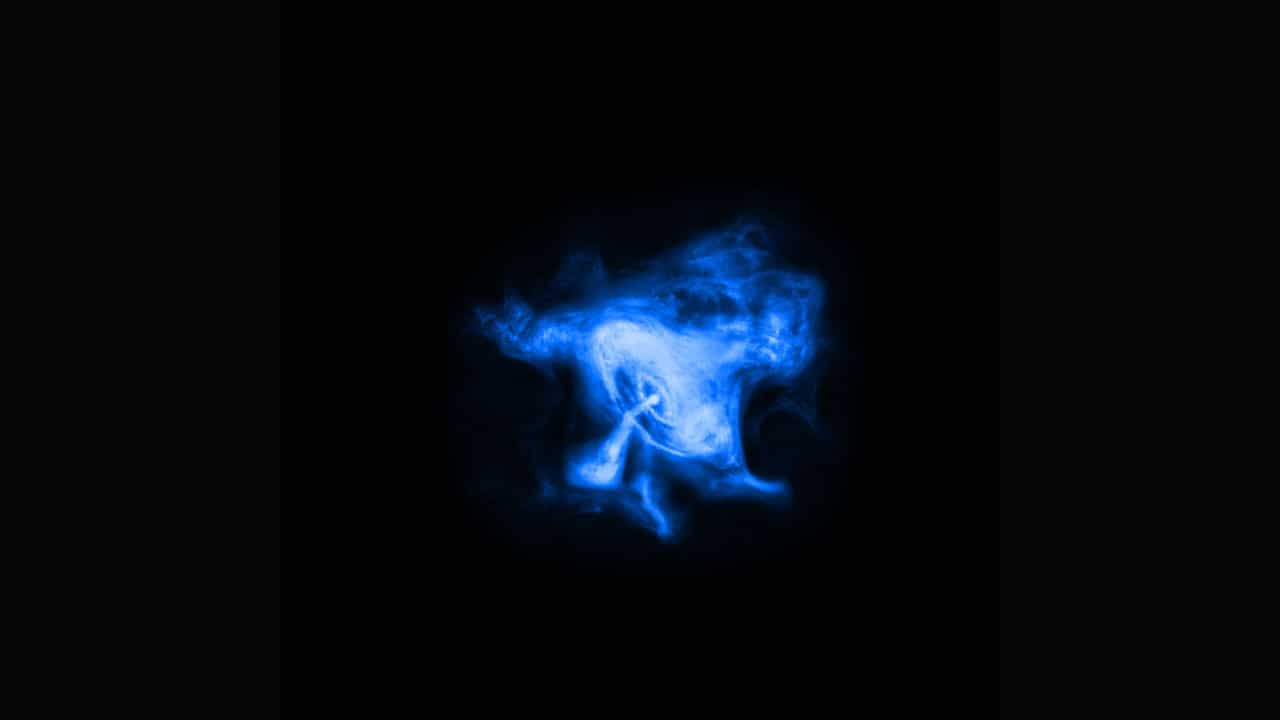With an apparent magnitude of 8.4 and located 6,500 light-years from Earth in the constellation Taurus, the Crab Nebula can be spotted with a small telescope. It is a supernova remnant in the constellation of Taurus.
The nebula is filled with mysterious filaments that are are not only tremendously complex but appear to have less mass than expelled in the original supernova and a higher speed than expected from a free explosion.
Astronomers and visualization experts from NASA‘s Universe of Learning program have combined the visible, infrared, and X-ray vision of NASA’s Great Observatories to make a three-dimensional representation of the dynamic Crab Nebula.
The representation is created based on images from the Chandra X-ray Observatory and the Hubble and Spitzer space telescopes.
The representation dissects the complicated nested structure that makes up this stellar corpse. It offers a deep comprehension of the extreme and complex physical processes powering the nebula.
In the nebula’s very center lies a pulsar: a neutron star as massive as the Sun. The pulsar acts as a powerhouse engine energizing the entire system. The tiny dynamo is blasting out blistering pulses of radiation 30 times a second with unbelievable clockwork precision.
STScI’s visualization scientist Frank Summers, who led the team that developed the movie, said, “Seeing two-dimensional images of an object, especially of a complex structure like the Crab Nebula, doesn’t give you a good idea of its three-dimensional nature. With this scientific interpretation, we want to help people understand the Crab Nebula’s nested and interconnected geometry. The interplay of the multiwavelength observations illuminates all of these structures. Without combining X-ray, infrared, and visible light, you don’t get the full picture.”
“The three-dimensional structures serve as scientifically informed approximations for imagining the nebula. The three-dimensional views of each nested structure give you an idea of its true dimensions. To enable viewers to develop a complete mental model, we wanted to show each structure separately, from the ringed disk and jets in stark relief, to the synchrotron radiation as a cloud around that, and then the visible light as a cage structure surrounding the entire system.”
A team produced the visualization at the Space Telescope Science Institute (STScI) in Baltimore, Maryland; the Caltech/IPAC in Pasadena, California; and the Center for Astrophysics | Harvard & Smithsonian (CfA) in Cambridge, Massachusetts. It will debut at the American Astronomical Society meeting in Honolulu, Hawaii. The movie is available to planetariums and other centers of informal learning worldwide.
Summers and the STScI visualization team worked with Robert Hurt, a lead visualization scientist at IPAC, on the Spitzer images, and Nancy Wolk, imaging processing specialist at the Chandra X-ray Center at the CfA, on the Chandra images.
The visualization is one of a new generation of products and experiences being developed by NASA’s Universe of Learning program. The effort combines a direct connection to the science and scientists of NASA’s Astrophysics missions with attention to the audience’s needs to enable youth, families, and lifelong learners to explore fundamental questions in science, experience how science is done, and discover the universe for themselves.
